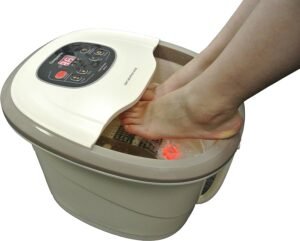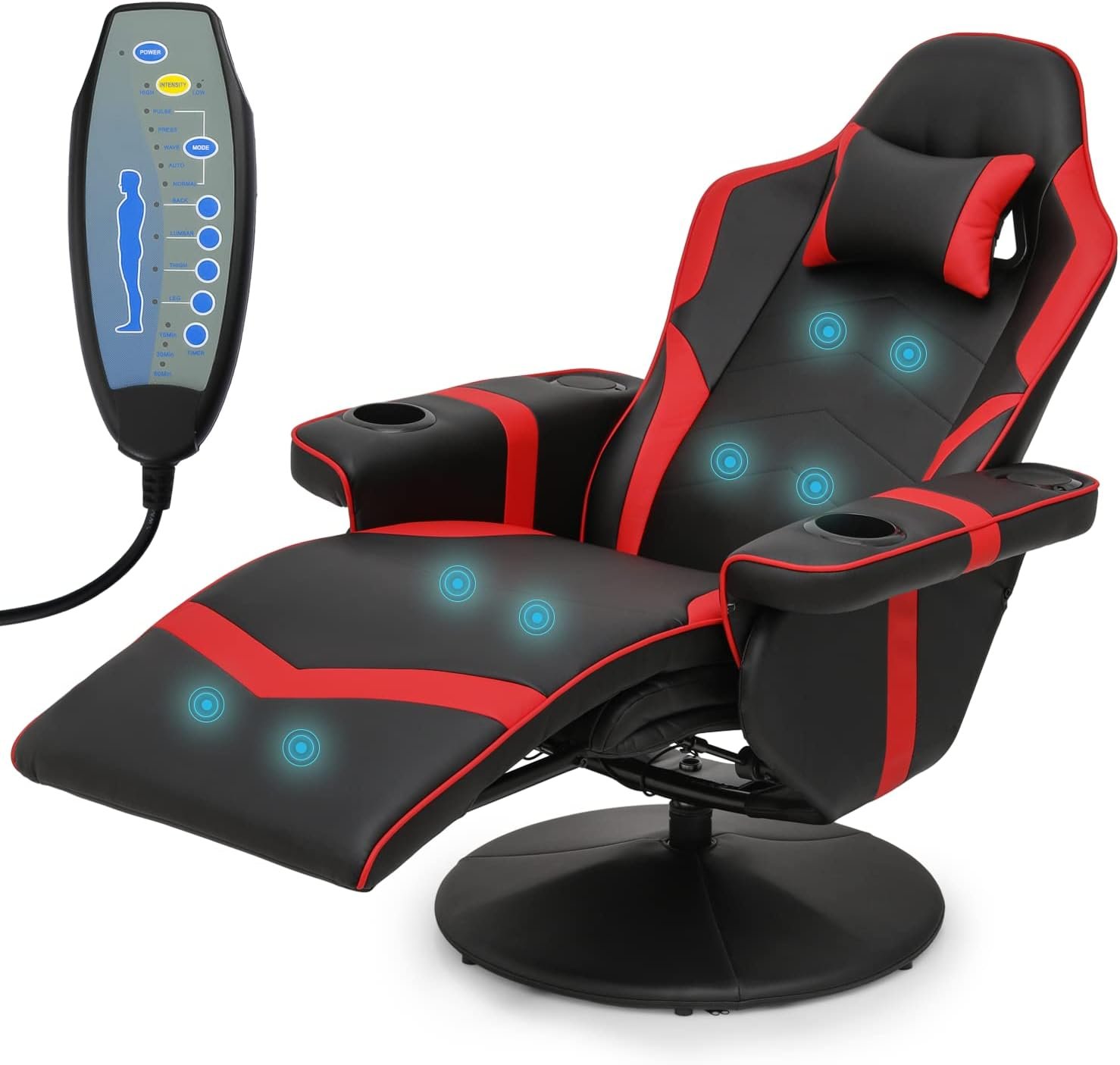In today’s fast-paced world, the pursuit of relaxation and stress relief has never been more paramount. Massage therapy has long been championed as a trusted method to alleviate life’s pressures. With the advent of technology and the shift toward home-based wellness solutions, a compelling question arises: should you indulge in the soothing embrace of hydromassage or the tactile precision of a massage chair? Let’s delve deep and discover the major difference between hydromassage vs. massage chairs.
What is the primary difference between hydromassage vs. massage chair?
Table of Contents
At its core, hydromassage uses water jets to target specific areas of your body, offering a unique water-induced therapeutic experience without you getting wet. On the other hand, massage chairs use mechanical motions and rollers, mimicking the techniques of a professional masseuse to give you a tactile massage experience.
1. Understanding Hydromassage
Hydromassage, as the name suggests, harnesses the power of water to deliver a therapeutic massage. It involves lying on a waterbed-like surface while jets of water target specific body areas. The beauty of this method? No need to get wet! The water pulses beneath a barrier, creating a gentle yet effective rhythm.
Some noteworthy hydrotherapy benefits include muscle relaxation, unparalleled pain relief, and improved circulation. Indeed, the allure of a “water jet massage” can be hard to resist.
The Advantages of Hydromassage
Hydromassage isn’t just about splashing water around. It’s equipped with features like adjustable pressure settings and precise temperature controls, making it easy for users to fine-tune their experience. Hydromassage caters to all, whether aiming for a gentle lull or a more intense session.
There’s growing evidence that hydromassage can offer therapeutic relief for specific health conditions. Specifically, “hydrotherapy for back pain” has been a buzz phrase among health professionals. With its tailored approach, the “hydro massage benefits” are broad-ranging, catering to both the body and soul.
2. The World of Massage Chairs
On the other side of the spectrum lies the sophisticated realm of massage chairs. Imagine a dedicated wellness corner in your living room, awaiting your daily return. These chairs utilize mechanical motions and rollers to simulate the hand movements of a professional masseuse.
The marvels of “massage chair technology” mean you get an accurate, rejuvenating massage without stepping out of your house. They’re a testament to how far “home massage solutions” have come, marrying convenience with luxury.
Benefits of Owning a Massage Chair
Massage chairs, beyond their obvious appeal, offer myriad advantages. The convenience is unparalleled—bid farewell to booking appointments or waiting in line. In the long run, they’re also remarkably cost-effective, eliminating per-session costs associated with traditional spa visits. Plus, there’s the bonus of privacy; it’s just you and the chair.
Modern chairs are a marvel in customization. With settings that cater to various massage techniques, from shiatsu to Swedish, users can experience a holistic massage. “Massage chair benefits” aren’t limited to just relaxation either. Many find relief from chronic pain, stress, and even insomnia. And with the myriad of “massage chair features” available today, there’s always a new experience awaiting.
Read: Best Massage Chair Consumer Reports
Hydromassage vs. Massage Chair: Top 7 Differences to Help You Decide

In the quest for relaxation and pain relief, two prominent options often emerge hydromassage and massage chairs. Both boast many benefits and while they overlap in some areas, there are notable differences. This listicle might be your guiding light if you ponder between the two. Let’s dive into the top 7 differences between hydromassage and massage chairs to help you decide.
- Nature of Treatment:
- Hydromassage: Utilizes the power of water. Imagine lying on a bed with water jets targeting specific body areas without getting wet.
- Massage Chair: Employs mechanical motions and rollers designed to mimic the hands and techniques of a skilled masseuse.
- Therapeutic Touch:
- Hydromassage: Offers the unique sensation of water jets. The warm water relaxes muscles and promotes circulation, making it a favorite for those seeking “hydrotherapy benefits.”
- Massage Chair: Provides a tactile touch experience. If you’re a fan of deep tissue massages or kneading techniques, chairs offer a more “hands-on” approach with “massage chair technology.”
- Customization:
- Hydromassage: Adjustable pressure settings and temperature controls provide a highly personalized experience. It’s easy to go from a gentle, soothing session to an intense water massage.
- Massage Chair: Offers techniques such as shiatsu, Swedish, and more. Advanced chairs even allow users to target specific body parts or pains.
- Space & Aesthetics:
- Hydromassage: Often requires a dedicated space, similar to a tanning bed. Its design is sleek and modern, fitting into high-end spa aesthetics.
- Massage Chair: This can be incorporated into living or bedroom spaces, making it a dual-purpose piece of furniture. They come in various styles, from ultra-modern to classic leather designs.
- Maintenance:
- Hydromassage: Requires occasional water treatments and cleanliness checks to ensure optimal functionality.
- Massage Chair: Primarily needs regular surface cleaning and occasional checks on mechanical components.
- Therapeutic Effects on Health Conditions:
- Hydromassage: Especially popular for “hydrotherapy for back pain” and conditions that benefit from improved circulation.
- Massage Chair: Favored for muscular pain, stress relief, and conditions benefitting from targeted pressure point therapy.
- Cost Implication:
- Hydromassage: Initial set-up costs can be substantial, but the ongoing costs are relatively low, especially with minimal water treatments.
- Massage Chair: Upfront costs vary depending on features and brand, but once purchased, there’s little to no recurring cost, making it a one-time “home massage solution.”
Read: Massage Gun vs. Stretching
1. Are there any specific health conditions that benefit more from one over the other?
Both methods offer therapeutic benefits, but they shine differently for specific conditions. Hydromassage, emphasising warm water and circulation, is often recommended for those seeking hydrotherapy benefits, especially for back pain and improved circulation. Massage chairs are versatile and particularly beneficial for muscular pain, stress relief, and conditions that benefit from targeted pressure point therapy.
2. Which one requires more maintenance – hydromassage or massage chair?
Hydromassage systems typically require occasional water treatments and cleanliness checks to ensure the water remains sanitary and the system functions optimally. Massage chairs, on the other hand, mainly need regular surface cleaning and periodic checks on mechanical parts. The maintenance level might vary based on the specific model and brand but generally follows this pattern.
Read: Ogawa vs. Osim Massage Chair
Conclusion:
Both hydromassage and massage chairs offer distinctive relaxation experiences. While hydromassage immerses you in the rhythmic dance of water, massage chairs bring the professional masseuse experience into your home. The choice ultimately depends on your preference, budget, and the therapeutic benefits you’re seeking. Either way, ultimate relaxation is just a session away!

